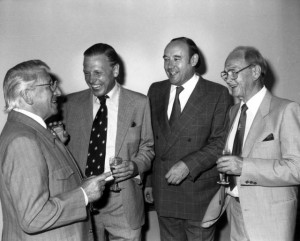David Attenborough's return to Slimbridge

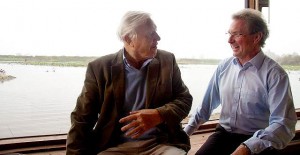
Half a century ago the BBC ran a live outside broadcast called Guest At Slimbridge. The guest that day, 9 May 1962, was none other than Sir David Attenborough and, of course, he was visiting his friend Sir Peter Scott.
Sir David is still broadcasting today, but much about the world has changed significantly during his lifetime. As befits such an unparalleled career, this autumn the BBC will broadcast a three-part series reflecting how broadcasting, science and conservation changed during his life. We were delighted to welcome Sir David and the BBC to Slimbridge to film a very special part of that story.
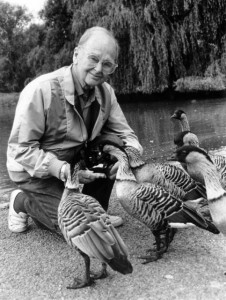 Saving the nene
Saving the nene
Sir David credits Peter Scott and the work he started at Slimbridge with alerting him to the danger that animals could go extinct due to our actions and that we have the power to do something about it.
For the filming Sir David revisited the Studio at Slimbridge, where he had sat with his old friend looking out of the window at the wildfowl on the Rushy Pen, and recounted his close relationship with Sir Peter and how he went on to establish international cooperation for saving species, and founded the WWF in order to fund it.
One bird in particular is singled out for its significant story: the nene (pronounced 'nay-nay') Hawaiian goose. Due to the impact of dogs, cat and mongoose introduced to its native Hawaii, numbers of these birds had dwindled to just thirty or so by the 1950s.
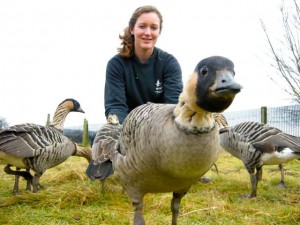
Rather than watch from the sidelines as this bird went extinct, Sir Peter did all he could to establish a breeding stock of them in captivity and used his broadcasts to tell the public about the birds' plight.
The nenes bred at Slimbridge started to be returned to Hawaii 50 years ago, also in 1962, and the legacy today there is still a healthy breeding population of nene in Hawaii, as well as at Slimbridge. Sir David spent time with the birds, feeding them by hand and recounting their how their story affected his view of the natural world.
Pochard tale
Another story he tells from those early days of natural history broadcasting is about another very significant bird: the Madagascar pochard.
Unlike today, in the 1950s the pochard could still be seen in some numbers on Lake Alaotra, Madagascar's largest lake. Sir Peter had asked David to bring him back a pair, for the collection at Slimbridge.
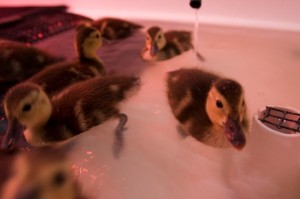
Sir David never did, and you'll have to watch the programme to find out why, but the story of the pochard may have been a bit different if he had.
Animals today are only taken into captivity for very specific conservation benefits and not without extensive consideration of the possible effects. What wasn't known then, was that the Madagascar pochard would within decades be feared to be extinct.
It was only the rediscovery of a small population on a remote lake hundreds of miles away in 2006 that has allowed us to put in place an emergency conservation breeding programme and try to save the species from extinction.
We are today still living out Sir Peter Scott's legacy. Without his lead we wouldn't be doing what we are to safeguard the Madagascar pochard or the spoon-billed sandpiper.
It was a wonderful privilege to hear Sir David Attenborough, surely our greatest natural history broadcaster, pay tribute to that.
